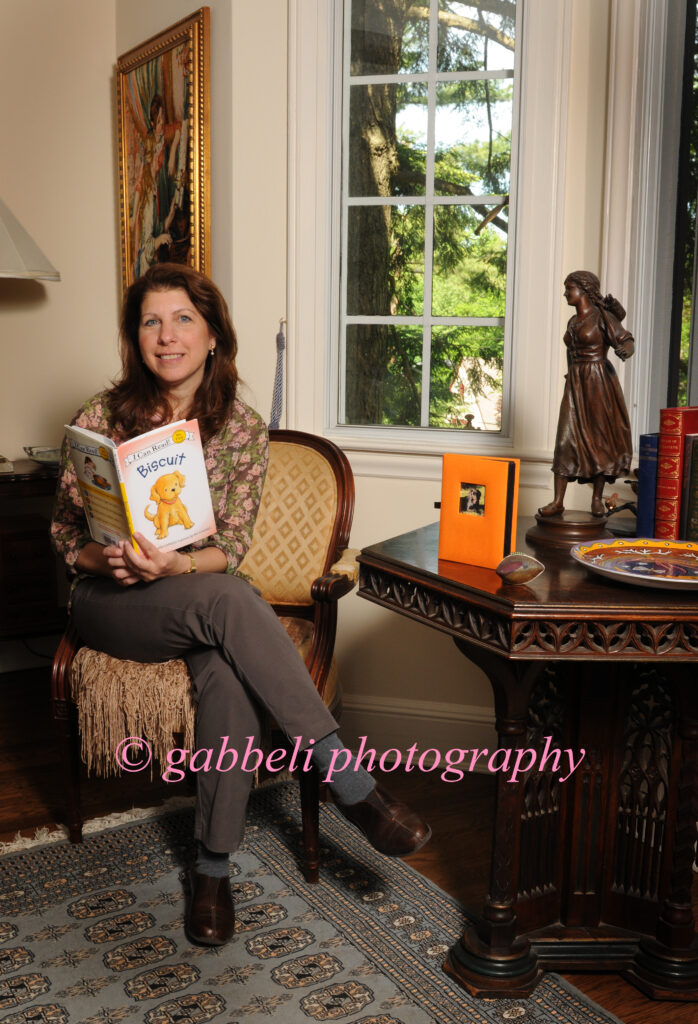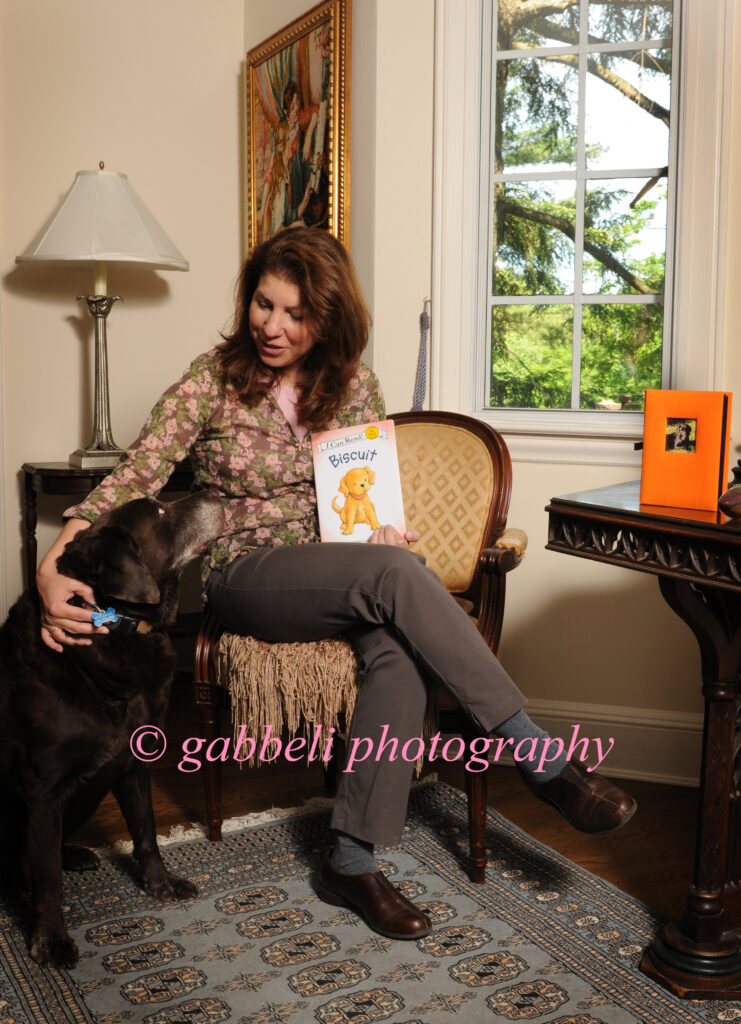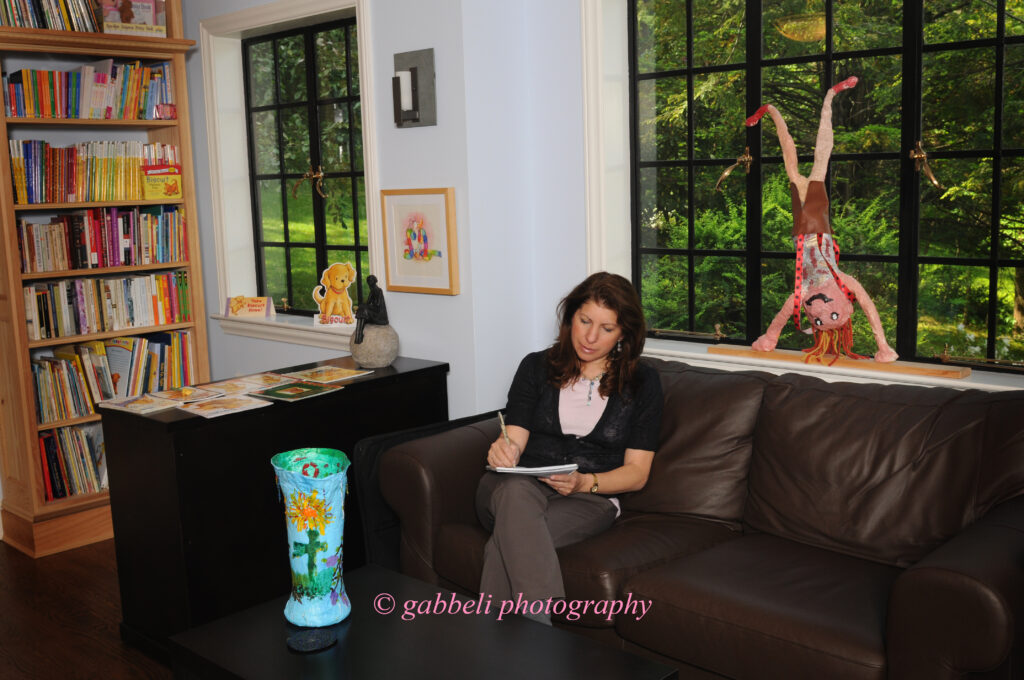“Write what you know,” Mark Twain once said. For the most part, that’s true, since you can find inspiration anywhere — especially in your own life. That’s exactly what happened to Alyssa Satin Capucilli, the author behind the famous Biscuitbooks. And chances are, if you have an emergent reader on your hands, you know all about Biscuit, the book series based on a playful puppy and its themes of gentleness, kindness, and cooperation. So it was lovely to discover that Capucilli herself is just as kind and gentle as the books she writes. We spoke with her about inspiration, her love for Beverly Cleary, and creating a world that embraces and encourages children to be their best (and most authentic) selves.
Have you always been a writer?
I always wrote my whole life. I loved writing but it was interesting because I never thought I could be a writer. I loved dance and in college I ended up choosing dance and I danced professionally for about 10 years before I actually returned to writing.
What kind of dance did you do?
I danced with a modern company and that really influenced me years later. I taught creative movement for kids and now I’ve written a series of books based on a duck named Katy. She is a feisty ballerina in the making. Much of the book is based on the children I taught, their creative spirit, and giving dance to kids as an artistic outlet in addition to the beautiful form to let them use their own creativity and imagination — that’s what Katie is all about.
So how did Biscuit come to be?
I’ve always been a puppy lover. I was always the kid who went to the library and the librarian said, “Read this book; it’s about a dog,” and I fell in love with Beverly Cleary and Henry and Ribsy. I think she influenced so many people and her books are still as timely today as they were then. I related to Henry; he was always the kid who wanted a dog but couldn’t have one. Then he found the dog and I truly believed that could happen to me. So I think that was sort of a seed planted in me.
Then one night, my daughter decided to babysit for our neighbor’s really big dog. She was about 4 or 5-years-old and she had a doggie sleepover. The dog was so excited, of course, that he would not settle down. She began to think about things that would get him to calm down: a bowl of water, a snack, a bedtime story. What I was most struck by was that she was having a conversation with the dog like a dialogue. Everything she said she assumed he understood. Long story short, he didn’t really go to sleep very well that night. When he finally curled up and went to sleep, she looked over from her bed, saw him on her rug, and fell asleep. I loved how gentle and patient she was and the conversation, and the very next day, I sat down to write the first book about Biscuit.
I could have used her voice: “Time for bed!” and then changed the dog’s name and made him a small yellow puppy instead of a giant dog. But that’s what you do: you take what’s real in your life and you stir in imagination, and your character is born. It was an amazing experience.
What breed of dog is Biscuit?
We like to say that he’s part Yellow Lab, part Golden Retriever, and I always say, part silly.
Now, the little girl doesn’t have a name. What was the idea behind that?
I was watching my daughter, Laura, but I wanted to write about any child, any grown up, really, who was a puppy lover. If you read the first book, I never say that I’m thinking of my daughter or a little girl. I really wanted it to be anyone. The illustrator, Pat Schories, happened to draw a little girl. We didn’t know each other at the time, and it happened to look a little like Laura. I know it was based on her; I look at that little girl character as every person and puppy lover. Laura actually had the opportunity years later to model for the illustrator. In that way, it came full circle.
Will Biscuit ever get older?
Biscuit the character will never get older. I’m going to leave him a puppy. His world will grow. We started with two characters and now we have friends and family, a neighborhood and adventures, so his world will get bigger. But he is about to celebrate, as a book, his 15th birthday.
That’s amazing.
Totally unexpected. Totally a surprise. I pinch myself all the time. I lot of it came from students and kids who wrote to me and said, “Biscuit is the first book I’ve read all by myself.” And I said to myself, “I’ve got to make a library, got to make a world for these kids to read with.” It’s been just a joy the whole way through.
Since Biscuit is one of the first books that kids read, I can only imagine the importance you place on making the books ideal for those ages.
Reading is a milestone that we can take for granted, unless you’re a parent, or are working in a school with kids who are having trouble reading. The nicest thing was that last weekend we were at a book fair and there were a bunch of teenagers who wanted their Biscuit books signed because it was the first book they had read, and it really meant something to them. These are beautiful memories we want to hold onto.
Do you realize you’re becoming Beverly Cleary for this new generation?
That’s a very generous compliment but I’m delighted that children are loving to read with this character. To know that I can go to the smallest town U.S.A or a big city and to know that people know your books is just humbling. Whatever part of helping children to cross this bridge is lovely, and to be surrounded by kids woofing along as we read and knowing what those woofs mean is an absolute delight.
And you do visit many schools yearly.
Yes, I go to about 30 schools each year. We do readings and we talk about what it’s like to be an author. What I tell them is that when I was their age, I would go to the library every week with my mother and my sisters; it was a really big event. We chose our favorite books, but we never considered ourselves authors even though we told stories and wrote stories and made up plays and did puppet shows. Those are all parts of being an author and a storyteller.
Today there is a focus in school on children authoring and ownership of what you create. We’ve put it into their hands; they are unafraid and really able to express themselves, which is the most important thing. I always say I’m excited to see what I’ll be reading in the future with all these future authors.
I think writing, especially writing your truth, is so critical.
It’s a very empowering process. When you write something, you think of it as a treasure. I sometimes bring in my own notebook because I write everything long-hand. There are all sorts of ways as long as it’s written down and kept in a safe place.
Why do you choose to write longhand?
I think the very act of pen to paper allows you to think, and I think you need time. There might not be that many words in a Biscuit book, but I choose them carefully. If you cross out a word you can go back to it and consider it. But if you delete a word in a document, you can lose a story that way.
It makes you slow down.
Yes, it makes you slow down, which I think we all need. It’s deliberate thought, which I also think we all need and letting yourself get into the mode of the creative thought process. I love the computer when I’m going into my final draft, or if I’m going to submit something, but I’ve gone through at least 25-30 drafts on paper before that. Every so often it tumbles out, and that’s great, but pen and paper is what I live for all the time.
Being here and speaking with you, it’s a very zen experience. You had mentioned that you keep it that way on purpose.
I think when you’re writing for children, you’re giving them a slice of the world. For some kids, it’s a very chaotic world, and so with a book, it’s like a respite, that is a quiet moment for you. Biscuit itself is a very gentle world — that’s what it’s based on. There’s that sigh factor when you get to the end of it.
It’s simple but it’s not.
It’s simple but it’s not, that’s exactly right. You might say that Biscuit is the child, and the little girl is sort of the parental figure. There’s this great interaction of maybe what is the way to be. I don’t want to over philosophize it, though! [laughs] But there’s a philosophy to it, there really is. That little girl figure does not go for many, many lessons of any kind. She does not spend a lot of her time playing video games. It’s that kind of a world where we’re really concentrating on the heart of the characters rather than the stuff that keeps us all busy every day. It’s not a chaotic world. And in some ways kids identify with Biscuit’s emotions as well as the little girl character.
Biscuit isn’t your first book, though.
People think that Biscuit was the first book I published but I actually have 4-5 books before that. I did a series with Ted Arnold; the Inside Series is what we call it — Inside a Barn in the Country, Inside a Zoo in the City, and Inside a House That Is Haunted. They were really fun.
Right now we have 15 Biscuit books in the I Can Read series (we do one a year) which are designed with a certain kind of vocabulary to support emergent readers. Then we have about 40 other books where we celebrate holidays, we have flaps that lift, we have tactile touch and feel elements and other formats. The backbone are the I Can Read’s. We all learn to read in a different way and we’re trying to support that.
One of my newest characters is Katy Duck, which is very much a product of my dance teaching and my dancing life. She is the ballerina that didn’t necessarily fit the mold but that was a good thing because Katy believes that anything is possible if you imagine and believe it. I think she has a great personality and as much as I wrote her, in some ways she really wrote herself. She pushes me to all these different boundaries. It’s an interesting process. It becomes a world and an entity of its own.
And then you become the vehicle by which it comes out.
I always say that. Sometimes you write a book and you’re not sure where you wrote it from or why you wrote it, and yet you realize when you read it even before it’s published that, “Ah, that was a conversation that I had with my son. He wanted this or that to happen, and it came out in this character.” The imagination has to come from who you are.
 It all goes back to using your life as inspiration in a way.
It all goes back to using your life as inspiration in a way.
Both my daughter and my son have influenced my writing tremendously. I began writing when he was about 4 or 5, in between everything. One day he said to me, “Mommy, I want to be as big as the sky.” It was such a poetic line and at that time I didn’t have all of my notebooks, so I grabbed a pen and some paper and I remember staying up that night and creating a book called I Want To Be As Big As The Sky. So I do say that he launched me, for sure. He actually inspired one of my most important books, Mrs. McTats and Her Houseful of Cats. It’s an alphabet book and a counting book, and a rhyming book, but at the heart of the story is that Mrs. McTat’s door is always open as well as her heart. My son was always troubled when people weren’t kind or respectful. We always talked about the world that there should be so sometimes in books you create a world that there could be.
And you have.
I’ve been lucky to be able to share the messages with so many people, which is great. I’ve learned that you don’t always have to follow one path if something else calls to you. You do everything from who you are and what your influences are. It doesn’t always work out as you might think and sometimes the best things are those great surprises. If you had told me 20 years ago that I’d be writing and speaking to children and traveling and living in this amazing world of literature, I wouldn’t have said that would be so. It’s just been this amazing journey that I hope will continue.






